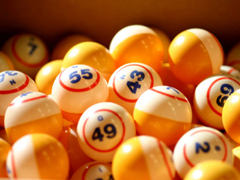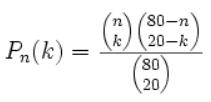|
Online Casinos
USA Online Casinos
UK Online Casinos
Spain Online Casinos
France Online Casinos
Germany Online Casinos
Japan Online Casinos
Online Casino Games
Blackjack
Roulette
Slots
Video Poker
Craps
Baccarat
Keno
Caribbean Poker
Casino Information
Casino Bonuses
Casino Tournaments
Casino Jackpots
Casino History
Casino Rules
Casino Strategies
Casino Odds
Casino Tips & Tricks
Casino Winners
Casino Dealers Blackjack
Blackjack Rules
Blackjack Strategies
How To Play Blackjack
Blackjack Odds
Blackjack History
Blackjack Tips & Tricks
Roulette
Roulette Rules
Roulette Strategies
How To Play
Roulette
Roulette Odds
Roulette History
Roulette Tips & Tricks Slots
Slots Rules
Slots Strategies
How To Play Slots
Slots Odds
Slots History
Slots Tips & Tricks Video
Poker
Video Poker Rules
Video Poker Strategies
How To Play
Video
Poker
Video Poker Odds
Video Poker History
Video Poker Tips & Tricks Craps
Craps Rules
Craps Strategies
How To Play Craps
Craps Odds
Craps History
Craps Tips & Tricks Baccarat
Baccarat Rules
Baccarat Strategies
How To Play
Baccarat
Baccarat Odds
Baccarat History
Baccarat Tips & Tricks Keno
Keno Rules
Keno Strategies
How To Play Keno
Keno Odds
Keno History
Keno Tips & Tricks Caribbean
Poker
Caribbean Poker Rules
Caribbean Poker Strategies
How To Play
Caribbean
Poker
Caribbean Poker Odds
Caribbean Poker History
Caribbean Poker Tips & Tricks
|
Keno History
 The actual origin of keno or Keno History has been a mystery, as Keno is one of the oldest lottery games played in the casinos. Rumour has it that prehistoric Chinese rolls signify that Cheung Leung of the Han Dynasty set up a game akin to keno approximately in 200 BC. Cheung's city was at war for many years and ran out of provisions. It appears that the natives of the city denied chipping in of more money to the war funds, as a result Cheung introduced a game of probability in order to invite more income for the army. The game became an immediate sensation and had a big contribution in protecting the city. Keno as it is known now, spread all over China and also contributed to the funds for constructing The Great Wall of China. The game became popular and was called as the White Pigeon Game because pigeons were employed to carry the winning numbers from the keno games played in the larger cities to little villages and small towns.
The actual origin of keno or Keno History has been a mystery, as Keno is one of the oldest lottery games played in the casinos. Rumour has it that prehistoric Chinese rolls signify that Cheung Leung of the Han Dynasty set up a game akin to keno approximately in 200 BC. Cheung's city was at war for many years and ran out of provisions. It appears that the natives of the city denied chipping in of more money to the war funds, as a result Cheung introduced a game of probability in order to invite more income for the army. The game became an immediate sensation and had a big contribution in protecting the city. Keno as it is known now, spread all over China and also contributed to the funds for constructing The Great Wall of China. The game became popular and was called as the White Pigeon Game because pigeons were employed to carry the winning numbers from the keno games played in the larger cities to little villages and small towns.
During that period, the game was based on a very famous poem called The Thousand Character Classic. The legacy created by keno history is a Chinese poem comprising of a thousand numbers. This classic is a set of independent characters positioned in a poetic structure. In the beginning the characters of the poem were used as a romantic numbering system so that it will be easier for the young generations to learn. So, the board of Keno was made of these characters instead of numbers. Encompassing two hundred and fifty phrases with four characters in each, the classic was inscribed by Zhou Xingsi. Out of these 250, 120 were put to use, bi-levelled into eight characters to every level. Decisively, whoever would guess a whole level correctly determined the winning or losing. In the beginning all the 120 characters were used in the game. Only after it became popular in the other parts of the world the game had only a memorable 80 characters. The classic poem still remains a popular method for counting, by making use of 1,000 Chinese symbols, not any of them replicating themselves.
Until the beginning of the twentieth century, Keno remained within China. Nevertheless, a lot of other lottery games were played and practiced in different parts of Europe. The first recorded Lotteries are proof enough, as the widow of the Flemish painter Jan Van Eyck drew all the left behind paintings. The word lottery came into being in the year 1515. It was derived from an Italian word Lotto which means destiny or fate.
Chinese refugees were brought into The United States, in order to lay railroads and work in the mines. Chinese communities were the first to bring in the keno history into the United States. Keno initially happened to be called as the Chinese Lottery. In the beginning the game was popular only with the Chinese. It didnít take a long time for the game to become accepted amidst the Americans although; the Chinese characters were mystifying the non-Chinese. Gambling, lotteries and draws were banned by the law at that time, as these provoked corruptions. Nevertheless, keno was played fervently, by converting the Chinese characters into numbers making it easier for the Americans and the non- Chinese to understand.
Gambling was allowed and approved in Nevada in the year 1931. Yet, lotteries were not legally recognized. Keno was a lottery game according to the Federal Government. Still, in order to become public, members of Keno plainly altered the name to Racehorse Keno, successfully covering the actual intent of the game. Every number was nominated as a horse, although there was no link between the game and racing. However, even today, in many casinos, every single draw is called a race. When the government passed an act that taxed astray gambling, Racehorse Keno was again changed to Keno.
Mathematical Keno Ė A Case Study
In another version of the game that is played in the region of Maryland, there is a defined estimation for winning probabilities.
In Maryland, every player uses a pencil to fill in a small slip. The attendant then transfers the slip into a pink machine that produces a computer printed ticket in order to eliminate tampering through cryptographic hash function. A game played in every interval is monitored via a television screen. The computer chooses twenty numbers between one and eighty. The payout is worked out depending on the number of numbers that were selected to those that matched.
The probability that K of the n numbers chosen by the player, that is, Pn
(k)
Comes within the 20 chosen numbers selected by the computer can directly be derived:
-
The number of potential outcomes that meet the number of permutations of eighty numbers that have been taken twenty at a time.
-
The number of ways in which k of n numbers chosen by a player comes within the twenty numbers that is randomly selected by the computer will equal the number of ways in which k numbers can be selected from a set of n numbers.
-
The number of ways in which the remainder of the numbers do not occur in the twenty numbers chosen is given by the number of ways in which 20 k numbers can be selected from a set of 80 n numbers.
Combining the above mentioned, it can be said that,

The amount of money for each outcome is then made available on the Maryland Keno Website.
But according to a survey, the topmost game for a player is the three-spot game, which gives a very high return. The seven-spot game positions close behind returning just about average. The ten-spot game is by far the poorest from the player's viewpoint.
So, in conclusion, there is no proper Keno History that is available in any books or inscriptions. What there could be is a lot of good quality opinion that if kept in mind while playing the game will probably help in winning. It is very essential to do research before playing a keno game.
|
 The actual origin of keno or Keno History has been a mystery, as Keno is one of the oldest lottery games played in the casinos. Rumour has it that prehistoric Chinese rolls signify that Cheung Leung of the Han Dynasty set up a game akin to keno approximately in 200 BC. Cheung's city was at war for many years and ran out of provisions. It appears that the natives of the city denied chipping in of more money to the war funds, as a result Cheung introduced a game of probability in order to invite more income for the army. The game became an immediate sensation and had a big contribution in protecting the city. Keno as it is known now, spread all over China and also contributed to the funds for constructing The Great Wall of China. The game became popular and was called as the White Pigeon Game because pigeons were employed to carry the winning numbers from the keno games played in the larger cities to little villages and small towns.
The actual origin of keno or Keno History has been a mystery, as Keno is one of the oldest lottery games played in the casinos. Rumour has it that prehistoric Chinese rolls signify that Cheung Leung of the Han Dynasty set up a game akin to keno approximately in 200 BC. Cheung's city was at war for many years and ran out of provisions. It appears that the natives of the city denied chipping in of more money to the war funds, as a result Cheung introduced a game of probability in order to invite more income for the army. The game became an immediate sensation and had a big contribution in protecting the city. Keno as it is known now, spread all over China and also contributed to the funds for constructing The Great Wall of China. The game became popular and was called as the White Pigeon Game because pigeons were employed to carry the winning numbers from the keno games played in the larger cities to little villages and small towns.